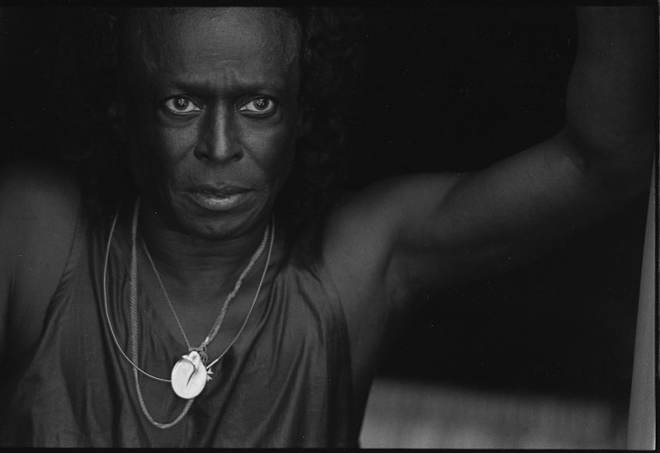It was 1957 when Herb Snitzer first discovered jazz. The young Philadelphia native was back from his army stint in Korea and just earned his bachelor’s from the Philadelphia College of Art. He wanted to be a photographer, and New York City seemed like the place to be for an eager young freelancer.
“I got my first job from Metronome, the jazz magazine of that day. They wanted me to shoot Lester Young, who played sax with Count Basie,” Snitzer told CL. And that was the beginning of a six-decade career for Snitzer. He didn’t know much about jazz, but he was instantly fascinated by the music and the musicians. From that moment he was hooked.
“That was my intro to jazz. Up to that time I listened mostly to classical music… Beethoven, Brahms,” he said. “But I fell in love with jazz.”
The introduction led to his lifelong passion for that music and a wonderful career photographing many of its most famous musicians. Snitzer established himself as a major photojournalist of jazz, snapping photos for most of the leading magazines of the day: Life, Look, The Saturday Evening Post, Fortune, Time and other national magazines; he also contributed to the New York Times and the Herald Tribune. His work graced album covers, too.
Saturday is Free Museum Day in St. Petersburg, and you can see some of Snitzer's photographs of famous jazz musicians from the ‘50s and ‘60s, at the Dr. Carter G. Woodson African American Museum where his photos from the Civil Rights Movement are also on display.
Sponsored by the Al Downing Tampa Bay Jazz Association, Inc. the program also features saxophonist Jeremy Carter, bassist Hiram Hazleyand vocalist Synia Carroll. University of Tampa professor and author John Capouya also joins Snitzer in a talk about the era.
Snitzer, now 86, looked back fondly on his long career and lifelong passion for photography when he spoke to CL; he remembered the doors it’s opened for him and the people he’s gotten to know — especially his friends in jazz.
“Nina Simone was a friend for nearly 30 years,” he said. “ I went to Europe with her several times, photographed her many times.”
Does he have any favorite stories about Ms. Simone?
“Just being with her was enough… she was a wonderful lady,” he said, “and a great performer.”
He also knew Miles Davis, Count Basie, John Coltrane, Thelonious Monk, Charles Mingus, Dizzy Gillespie, Sarah Vaughn. The list goes on and on and includes many not-strictly jazz notables like Buddy Guy, Bobby McFerrin, Tito Puente, and even the quirky John Cage. Satchmo, aka Louis Armstrong, “was a friend for 20 years.”
“Coltrane was devoted to his music, could practice 20 hours straight and in the process he became one of the jazz leaders before he died in 1967,” Snitzer wrote under one of his Coltrane photos. And it wasn’t just musicians that caught his eye. Snitzer took photos of Civil Rightsprotests in the ‘60s, ‘70s, and into the ‘80s.
“I photographed protests and marches in Harlem and around New York, mostly. They appeared in all the major media outlets,” Snitzer said about some of his work that’s on the walls at the Woodson. “My work looks at equality and civil rights. I examine oppressed communities like the African American and the LGBT community that are often ignored.”
He’s photographed St. Pete’s iconic Pride Parade, and in 1996, after Tyron Lewis was shot and killed by police, Snitzer’s Salt Creek Gallery (now closed) welcomed all artists to reduce racial tensions during riots. He also served on the board of the St. Petersburg NAACP for five years, showing his commitment to equality and justice. And he’s an educator, too. When he learned about Summerhill School in England, the progressive British school founded by A.S. Neill, Snitzer packed his bags and headed across the pond to learn more about Neill’s unorthodox methods.
“I spent four months at Summerhill, taking pictures and learning about free expression in education,” said Snitzer. “I did my first book about that in 1969, titled Living at Summerhill. It’s mostly photos showing life at the school.”
For the next 13 years Snitzer was co-founder and director of a progressive school in upstate New York. After that, he returned to academia and earned his master’s in Education at Vermont’s Goddard College. He then joined Polaroid Corporation for five years where he managed a program that taught educators the value of instant technology.
“The students loved being able to see a picture instantly, and it helped their cognitive awareness. It was a precursor to digital technology,” he explained before offering this quip: “It’s the only ‘straight job’ I ever had.”
In 1992, Snitzer visited St. Petersburg and decided he wanted to live here. He no longer has a gallery, but his work hangs in museums around the globe, from the MoMA in New York to the Smithsonian. He’s also produced several books of his photos, and was recently honored to have Washington D.C.’s new National Museum of African American Art and Culture acquire a set of his portraits of jazz greats for their permanent collection. But he does have one regret.
“I never got to photograph Ella Fitzgerald.”
Jazz and the Civil Rights movement w/Herb Snitzer/John Capouya. Sat. Sept. 21, 11:45 a.m. and 1 p.m. Dr. Carter G. Woodson African American Museum. 2240 9th Ave. S., St. Petersburg. (727) 323-1104. aldowningjazz.com.
Follow @cl_music on Twitter to get the most up-to-date music news, concert announcements and local tunes. Subscribe to our newsletter, too.


